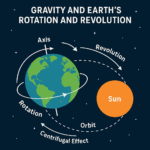
The Missing Walk Feature in Offline Google Maps: A Full-Time Traveler’s Perspective

As a full-time traveler, I rely heavily on Google Maps’ offline feature to navigate new cities and remote locations where internet connectivity can be unreliable. This feature has been a lifesaver, allowing me to download maps ahead of time and use them without an active internet connection. However, there’s a glaring omission in the offline capabilities of Google Maps: the Walk to destination feature.
The Importance of Walking Directions
Walking is often the best way to explore a new place. It allows for a more intimate experience, letting you take in the sights, sounds, and scents that you might miss while driving. Moreover, walking is often the most practical mode of transportation in crowded urban areas, historic districts, and nature trails where vehicles are not allowed.
While Google Maps offers detailed driving directions offline, the absence of walking directions is a significant drawback. Here’s why the Walk to destination feature is much desired and why Google should consider adding it.
Why the Walk Feature is Essential
- Tourist Convenience: Travelers often find themselves in unfamiliar territories where walking is the most efficient way to get around. Having access to walking directions offline would enhance the travel experience, making it easier to explore new places without getting lost.
- Safety: Walking directions can help travelers avoid unsafe areas, especially after dark. Knowing the best and safest routes to take when walking is crucial for personal safety.
- Health and Environment: Encouraging walking over driving not only promotes a healthier lifestyle but also reduces carbon footprints. In an era where sustainability is paramount, enabling offline walking directions aligns with global environmental goals.
- Efficiency: In many cities, walking can be faster than driving, especially during peak traffic hours. Offline walking directions can save travelers time and reduce the frustration of navigating congested streets.
Possible Reasons for the Omission
While the demand for offline walking directions is clear, it’s worth pondering why Google has not yet implemented this feature. Here are some potential reasons:
- Data Complexity: Walking routes are often more complex than driving routes. They can include pedestrian paths, shortcuts through parks, and other non-vehicle routes. Mapping these accurately offline may require more data and sophisticated algorithms.
- Storage Constraints: Offline maps already take up significant storage space on devices. Adding walking paths, which can be numerous and detailed, might increase the storage requirements, potentially making the app cumbersome for users with limited device capacity.
- Prioritization: Google may have prioritized driving directions due to higher demand or perceived importance. Driving routes are essential for navigating highways and major roads, which might be seen as more critical for offline use.
- Technical Challenges: Implementing offline walking directions might present technical challenges, such as updating and maintaining accurate walking routes, especially in rapidly changing urban environments.
Conclusion
The inclusion of a Walk to destination feature in Google Maps’ offline mode would be a game-changer for travelers like myself. It would enhance our ability to explore new places on foot, ensuring safety, convenience, and a richer travel experience. While there may be technical and practical reasons for its current absence, the demand for such a feature is undeniable.
As a frequent user of Google Maps, I urge Google to consider the addition of offline walking directions. It would not only cater to the needs of millions of travelers worldwide but also promote a healthier, more sustainable way of exploring our beautiful planet.
Hello, I am Aman (: Full Time Traveler :) At the age of 41, in April 2023, fueled by my love for travel and the determination not to remain fixed like a tree, I embarked on a bold journey. Having dedicated 17 years to a corporate job, I chose to transition from a full-time employee to a full-time traveler, driven by the desire to break free from the routine and constraints of a conventional life. Along the way, I not only explored the wonders of travel but also uncovered the transformative power of financial freedom. I realized how it could liberate me to lead a life teeming with adventure, purpose, and fulfillment. Through my blogs, I am passionately sharing my story, aiming to inspire and provide valuable guidance to those, like me, who aspire to weave travel into a life overflowing with limitless possibilities.






















Post Comment
You must be logged in to post a comment.